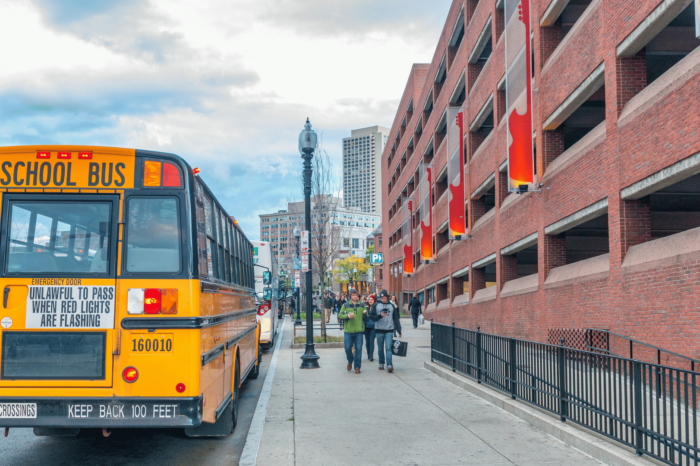Study: Update Finds Boston Public Schools Making Slow, Uneven Progress
Must address oversight and monitoring problems, close and consolidate schools to address steep enrollment declines
BOSTON — The Boston Public Schools (BPS) are experiencing some positive change in the wake of an updated memorandum of understanding with the state but have a long way to go to streamline critical processes, improve school accountability, and create a realistic, school-centered budget, according to a new study published by Pioneer Institute.
“There is much that needs to be done,” said Dr. Cara Candal, author of The State of Things: Tracking BPS’s Road to Improvement, 2022-23. “Continually declining enrollment and a looming fiscal cliff as federal pandemic funding expires will make the challenge even more daunting.”
After completing its second devastating review of BPS in less than three years, in 2022 the Department of Elementary and Secondary Education (DESE) chose to renew and strengthen a memorandum of understanding with BPS that details needed improvements and how the state will support those efforts.
The challenges are exacerbated by enrollment that has been declining for decades and grew even more severe during the pandemic, with families fleeing to the suburbs or choosing to homeschool their children. As a result, some schools are operating at half capacity. Since state funding is based on headcount, the result is more resources going into the maintenance of partially empty buildings and fewer into classrooms.
Even amid falling enrollment, BPS has used continually increasing budgets to prop up under-enrolled schools rather than closing and consolidating them, a decision that will have long-term negative consequences for student outcomes.
A third-party review of BPS’s progress conducted by Ernst and Young (EY) for DESE highlights the district’s progress or lack thereof in several key areas.
Students with Special Needs
The district has made some progress on practices and procedures for identifying and supporting students with special needs, but oversight and monitoring of Individualized Education Plans for these students remains a problem. Thirty percent of the IEPs reviewed were overdue and needed to be updated, suggesting that implementation of those plans wasn’t being monitored and IEPs were not being reevaluated in a meaningful way.
Student Withdrawals
There is a lack of data on why students leave BPS. When data are available, there is no process for verifying its accuracy. Of the 100 withdrawals EY reviewed, only 20 included withdrawal-related information.
On-Time Bus Arrivals
EY found that BPS failed to allocate appropriate resources to get students to school safely and on time. In a district of 46,000 students, just one person has responsibility for overseeing and managing bus routes. A random sample revealed that data were missing for 25 percent of planned arrivals.
Recommendations:
- BPS should move to free up funding for educational priorities by responsibly closing and consolidating under-enrolled schools and streamlining the district’s bloated central office.
- Given ongoing struggles with monitoring and oversight, the district should make a one-time investment in auditing, updating, and training personnel on district data systems.
- BPS should reimagine transportation by experimenting with concepts such as transportation grants under which families could choose whether the district buys them a T pass, funds gas purchases, or lets them use alternative transportation services such as HopSkipDrive.



